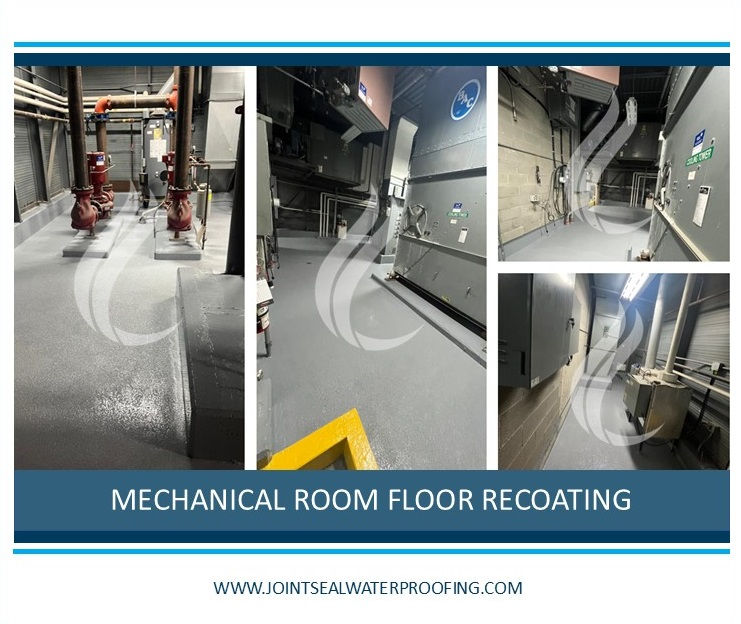Starting the Year: Elevator Pit Waterproofing with Polyaspartic
- Nataliya Muriy

- Jan 8
- 3 min read
We kicked off the new year with an elevator pit waterproofing project at a mid-rise residential building on Elm St. in Toronto. Elevator pits are prone to water infiltration, which can lead to corrosion, equipment damage, and costly repairs if not addressed properly. To prevent leaks and extend the life of the pit, we used a two-step repair approach: sealing the cold joints and applying a polyaspartic coating. This combination ensures long-term protection against water damage and helps keep the elevator running smoothly.
Our Waterproofing Method
Cleaning and Stopping Water Filtration
Before any waterproofing work could begin, we had to properly clean the elevator pit. Over time, oil and water can accumulate in the pit, creating slippery surfaces and preventing proper adhesion of sealants and coatings. Our team removed all contaminants to ensure the surface was completely clean and dry.
After cleaning, we identified the source of water infiltration. Instead of simply sealing over the issue, we used hydraulic cement combined with an industrial-strength adhesive to stop active leaks at the source. Hydraulic cement is fast-setting and expands as it cures, making it ideal for sealing water entry points in concrete. This step was essential to prevent ongoing moisture problems before applying the waterproofing system.
Cold Joint Waterproofing
Cold joints are the most vulnerable areas in an elevator pit because they are the places where two separate concrete pours meet, such as the floor and walls. Over time, moisture seeps through these joints, leading to leaks, cracks, and even structural deterioration. To fully waterproof the pit, we sealed all cold joints using a continuous patch at a 45-degree angle, reinforcing the weak points and creating a tight, waterproof barrier. This step is critical in preventing future water infiltration and strengthening the structure of the pit
Applying a Polyaspartic Coating
Once the cold joints were secured, we applied a polyaspartic coating to provide an extra layer of waterproof protection. This coating was applied to the entire floor and two feet up the walls, creating a seamless barrier against water, chemicals, and general wear and tear. Unlike traditional coatings, polyaspartic coatings cure quickly, which means less downtime and a faster return to service for the elevator. They also adhere strongly to concrete, providing a durable, long-lasting finish that won’t peel or crack over time.
Why We Use Polyaspartic Coatings for Elevator Pit Waterproofing
Polyaspartic coatings are one of the best options for waterproofing elevator pits because they are tough, flexible, and highly resistant to moisture. They stand up well to abrasion, chemical spills, and temperature fluctuations, making them ideal for high-traffic areas like elevator pits. The fast curing time means projects can be completed quickly, reducing elevator downtime and minimizing disruptions for building occupants. These coatings also have excellent flexibility, which helps them withstand the movement and vibrations that elevators create, ensuring that the waterproofing remains effective over time.
A Reliable and Long-Lasting Solution
By sealing the cold joints and applying a polyaspartic coating, we provided a durable, long-term solution to protect this elevator pit from leaks and water damage. Preventative waterproofing like this helps avoid expensive repairs, extend the lifespan of elevator equipment, and keep the building running smoothly.
If you’re dealing with water issues in your elevator pits, we can help. Learn more about our repair solutions and see examples of our work: https://www.jointsealwaterproofing.com/elevators.





Comments